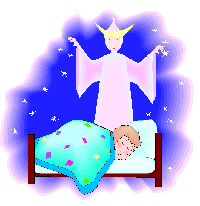

Family Network


|
Family Network


|
|

Pictures of the tooth fairy have been captured in everything from storybooks to art. The painter Maxfield Parrish is said to have depicted her once in the corner of a painting. Fairies in general are generally considered to be great influences in art, and folklore and legend surround each fairy tale.
Many folk cultures marked the loss of a child's baby or milk teeth. Some cultures placed the tooth in a tree or threw it to the sun. Other rituals involved having an adult swallow the tooth or burn it. Even the Vikings had their own ritual called "tooth fee" whereby a small gift was given to a child when its first tooth appeared.
Although it varies, children generally lose their first baby tooth between the ages of 5 and 7 years. The lost tooth is then placed under the child's pillow, in a special Tooth Fairy pillow or container. During the night, the Tooth Fairy visits and makes an exchange -- usually monetary -- for the tooth.
The Tooth Fairy was an established part of our American folklore by the early part of the 1900s.
The tooth fairy comes when a child has lost a tooth, commonly in the middle of the night. The tooth is left under their pillow, so that the tooth fairy can take it. A treat or money is left under the pillow in place of the tooth.
        
 Who Was Born On Your Birthday?
   
Mens.Net | Womens.Net | Mothers.Net | Fathers.Net | Grandparents.Net | Teenagers.Net Santas.Net | EasterBunnys.Net | JackOLanterns.Net | FatherTimes.Net | StValentines.Net HarvestFestivals.Net | BirthdayCelebrations.Net | ToothFairys.Net
 Please read our Legal Statement and Privacy Policy.
|